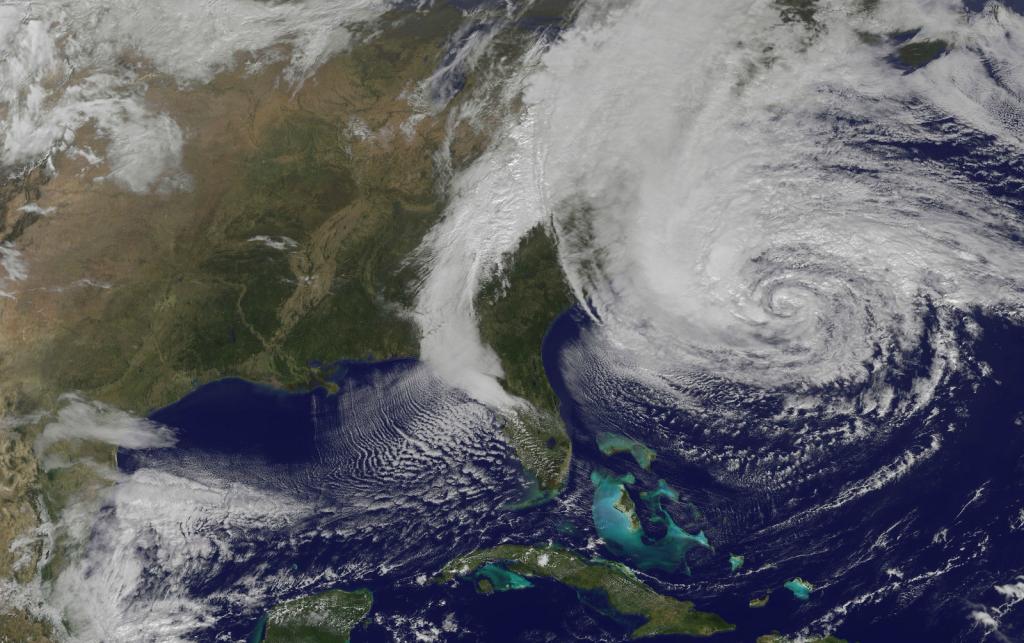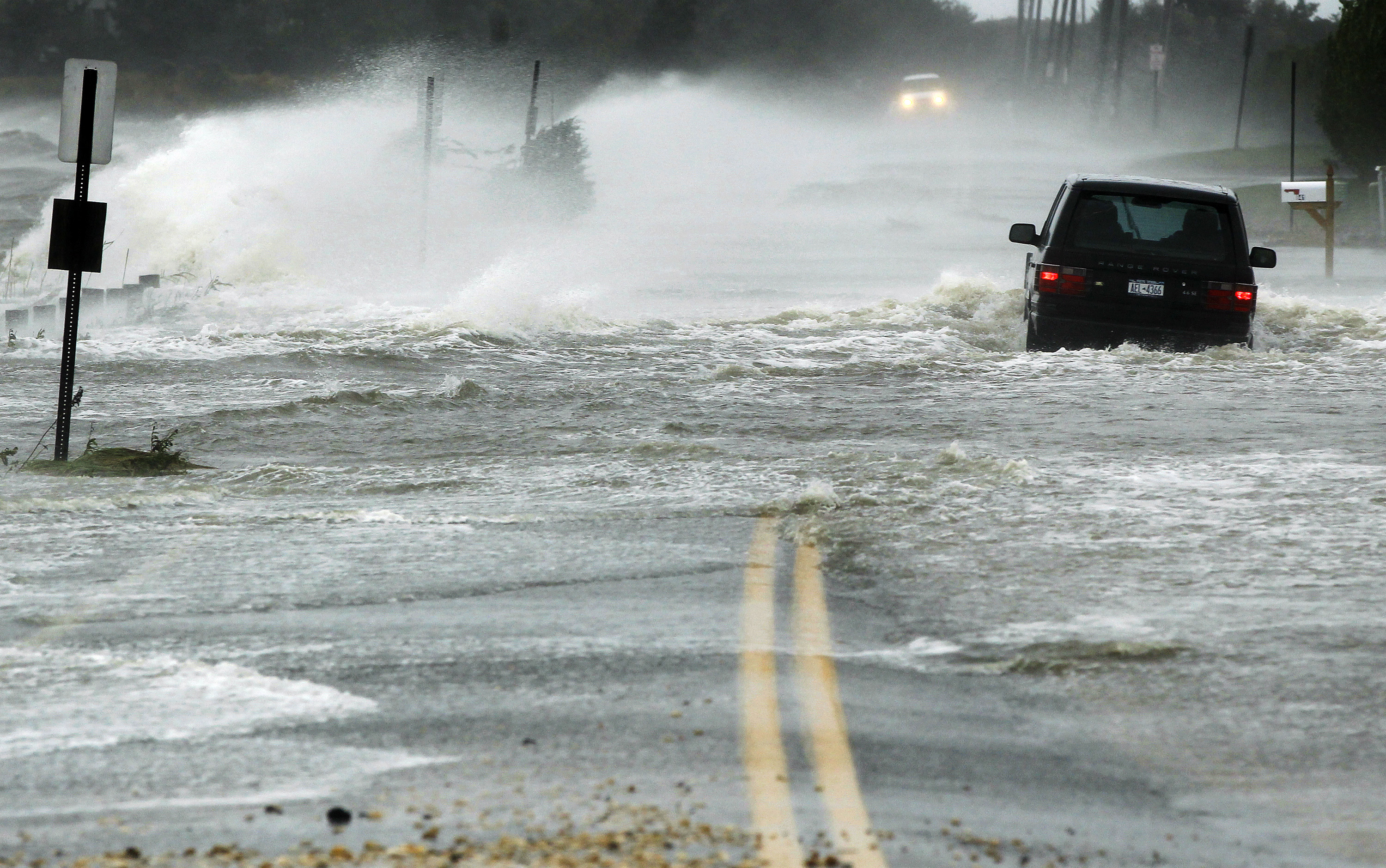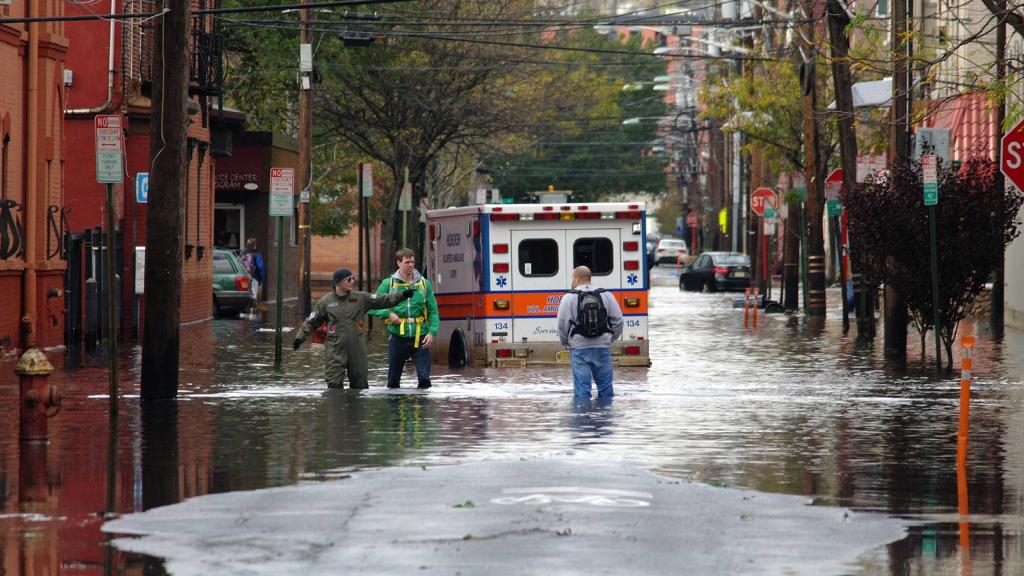A year ago, Northeasterners were bracing for the worst. On Oct. 27, with Superstorm Sandy pinwheeling up the East Coast, Gov. Chris Christie declared a state of emergency in all of New Jersey. Mayor Mike Bloomberg ordered 375,000 people to evacuate from low-lying areas of New York City, closing schools and shutting down the subway system. Stretching almost 500 miles across, Sandy had morphed into one of the most powerful storms in history, and it was about to body check greater New York.
For many, the worst came. In the past few weeks, we’ve seen story after story of residents who are still trying to piece their lives back together. But the storm played out quite differently for the residents of Cape May, N.J., a seaside haven for vacationers and birdwatchers. When they were allowed to return to their homes after the storm had passed, most locals found things largely as they had left them, not counting some minor flooding and truckloads of sand that washed into the streets.
Bill Ulfelder, New York executive director for the Nature Conservancy, credits a unique set of natural defenses for sparing parts of the town. Some of the neighborhoods that fared best were adjacent to the South Cape May Meadows preserve, a 218-acre natural area that the conservancy had worked to restore in 2004, alongside the state and the Army Corps of Engineers. “South Cape May had no wave damage and no flooding. All the water went into the wetland,” Ulfelder says.
[grist-related name=”shaken-and-stirred-how-climate-change-is-mixing-up-bigger-badder-hurricanes” ]
Ulfelder and his compatriots believe that Cape May holds lessons for other coastal areas as climate change whips up stronger, more damaging storms. Restoring dunes, marshes, and oyster reefs could dampen future storm surges, they say. Give a little back to Mother Nature, and maybe she’ll go a little easier on us.
The Nature Conservancy has become a vocal champion of using “green infrastructure” to protect urban areas from storm surges and other side effects of climate change. This July, Stanford researchers, working with the conservancy, published a study in the journal Nature Climate Change arguing that natural areas already protect 1.3 million people who live along the U.S. coasts. On the Gulf Coast, the conservancy has been experimenting with artificial oyster reefs to see if they can act as breakwaters, protecting shorelines and swamps.
Bloomberg wrote some natural protections into his $20 billion climate adaptation plan for New York, including replenished beaches and dunes, offshore breakwaters, wetlands, reefs, and “living shorelines” designed to reduce wave action and soak up storm water. Last week, Interior Secretary Sally Jewell announced that her department will pour $162 million in Sandy relief money into natural restoration and research projects aimed at protecting coastal communities from storms.
But for old-school engineers, this talk of “resiliency” and using nature to protect ourselves from … nature, is quaint. And totally inadequate.
“The idea of resiliency is to withstand [storms] and recover,” says Douglas Hill, a retired consulting engineer and an adjunct lecturer at Stonybrook University on Long Island. “Ask a man on the street whether he’d rather withstand and recover or be protected. I bet he’d rather be protected.”
Hill points to an interagency report [PDF] completed in the wake of Hurricane Katrina that found “no evidence of significantly reduced surge levels and wave heights in areas adjacent to wetlands and marshes.” A study published in Physics Today estimated that it would take a marsh almost 15 kilometers (nine miles) wide to dampen one meter of storm surge. “There’s no place you’re going to put 15 kilometers of marshes around New York,” Hill says. (And besides, Sandy’s surge was almost 14 feet at the Battery in New York, and even higher elsewhere.)
Bloomberg’s plan does call for armoring shorelines, building bulkheads, storm walls, levees, and massive tide gates and storm surge barriers. But Hill is among those who support much more aggressively engineered solutions for defending the city, including massive storm surge barriers like those protecting European cities such as Rotterdam, London, and St. Petersburg, Russia. Several New England cities, including Providence, R.I., already have these barriers. Engineering firms have proposed building similar barriers for New York, and while estimated costs run into the tens of billions of dollars, Hill points out that Sandy alone did at least $19 billion of damage.
“The Nature Conservancy people believe that wetlands are the answer to everything,” Hill says. “But a storm surge is not a big wave. It’s a sudden rise in the tide. It’s like saying that wetlands can hold back the tide. It’s just not the case.”
In fact, in a study to be released this week, Nature Conservancy scientists, partnering with the consulting firm CH2M Hill, find that green infrastructure alone will not be enough to protect us from rising tides. The study looked at Howard Beach, a low-lying neighborhood in Queens, in a number of different storm-defense scenarios, ranging from an all-natural approach to more engineered ones. Ultimately, it was a combination of the two that was most cost-effective.
Ulfelder acknowledges that the science on natural defenses is young. Still, he says green infrastructure should be a part of any effort to adapt to a changing climate — and not just for threats from monster coastal storms. Urban trees can help ameliorate the effects of heat waves. Wetlands, parks, and other green areas can soak up storm water. And unlike storm barriers, green infrastructure brings a host of side benefits, like cleaner air and water, wildlife habitat, and open spaces for people.
“Ultimately there are going to be some massive engineering works around New York City,” Ulfelder says. “There are places where no amount of dunes or beaches or marshes or forests you could put down there are going to protect them — the southern tip of Manhattan, for example.”
But New York has 1,500 miles of coastline, he says, and not every beach town on Long Island can afford massive storm walls. Even in the city proper, he says, natural solutions are often quicker and less expensive, and leave our options open for other solutions as time and money allow. “We need to be smart enough to think about the variety of risks that climate change and natural disasters represent,” Ulfelder says, and then find “the smartest, most cost-effective solutions.”
And while green infrastructure has its obvious limitations, so, too, does the “gray” stuff such as the dikes and levees of which engineers are so fond. Water is tricky stuff, says Nicholas K. Coch, a professor of coastal geology at Queens College who warns that New York hasn’t seen the Big One yet. Build a barrier in one place, and the water will go someplace else, with potentially disastrous results.
Coch has a name for engineering firms’ proposals to build massive storm surge gates around New York: “I call it our good neighbor policy,” he says. “We close those gates and we wipe out New Jersey, Coney Island, and the Rockaways.”
“The engineers love to build,” Coch says. “But geologists and oceanographers have to keep them under control.”



